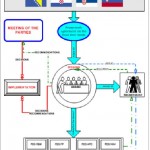
The establishment of the Stability Pact for South-Eastern Europe (SP) in 1999, provided a solid basis for the cooperation in the region. Mutual negotiations of the Sava countries, conducted under the auspices of the SP, resulted in the signing of the Framework Agreement on the Sava River Basin (FASRB) and the Protocol of Navigation, on December 3rd 2002, in Kranjska Gora (Slovenia), between Republic of Slovenia, Republic of Croatia, Bosnia and Herzegovina and Federal Republic of Yugoslavia (the later State Union of Serbia and Montenegro and than only the Republic of Serbia).
Continue reading







